HTZ Warfare is a comprehensive radio network planning and spectrum engineering tool for the deployment, optimisation and real-time analysis of mission-critical communications. Its powerful propagation engine comprises of ITU and industrial-standard deterministic and empirical models to model airborne, spaceborne, terrestrial and maritime radio networks.
For over three decades, leading military and defence spectrum organisations have relied on HTZ Warfare to design and optimise their offensive and defensive EMS operation missions. This technology-neutral solution supports all radio technologies including VHF/UHF/4G/5G, tropospheric links, UAV/UAS/drones and counter-drone, satellites in GSO/NGSO, MANET, radars, DF and jammers. Key features include coverage range analysis, site searching, On-the-Move path optimisation, link profile analysis, interference and coexistence mitigation strategies and automated frequency assignments.
The tool is equipped with a third-party spectrum DB plug-in to import ITU BRIFIC/SNS/SMADEF XML and civilian spectrum DB. The integrated map module streams the newest satellite images from MAXAR.
HTZ is a complete software solution for managing electronic warfare communications.
Key features include:
Communications network planning and optimisation – Coverage analysis, site search, interference mitigation and automated frequency planning of any radio systems between a few kHz up to 1 THz
On-the-Move mission planning– Network connectivity and coverage analysis in complex/ad-hoc mesh networks for OTM scenarios in the air, ground and maritime;
Radar simulation – Analysis of vertical and horizontal detection ranges for any deployment environment;
Direction Finding network design - Coverage and localisation accuracy analysis;
UAV/UAS mission planning – Flight path and elevation analysis optimisation between ground-to-air and air-to-air operations, including connectivity analysis. The counter-drone efficiency analysis calculates network coverage based on different height elevations or potential flight paths;
Counter-drone/counter-UAS - Site nomination and optimisation based on radar detection and DF localisation inputs to analyse jamming efficiency for target elevations and areas;
Coexistence analysis - Protects radars and CEW networks from civilian networks in dynamic spectrum operation environments;
Satellite – Supports GEO, MEO and LEO satellites and the earth segment coverage, connectivity and interference analysis. Import from ITU/SNS database directly into HTZW;
5G Non-Terrestrial Networks - 5G connectivity analysis for any spaceborne and airborne vehicle operations;
Tropospheric Link Analysis – LF/MF/HF groundwave and skywave link analysis based on the time of the day and year;
Automation capabilities – Customised workflows to support varying end-user requirements or system capabilities. These simplified interfaces support software users with no radio propagation background or users in the field;
Integration with third-party databases – Integrates ICS Manager no-DB users to import from DB like ITU BRIFIC/SNS/SMADEF XML and other civilian spectrum sources.
Access to MaXar images – Streams the latest cartography from map data supplier MaXar.
GIS Engine – supporting any mission for land, air and sea using the integrated cartographic library.
HTZ Viewer provides military users with offline access to maps, terrain data, and RF network analysis—ideal for mission planning in disconnected environments. One free perpetual license is available per HTZ Warfare customer under maintenance. Licenses can be requested via the CRM portal, with additional licenses available for purchase.
Enhance your operational efficiency with HTZ Viewer today. Contact your local office for more information.
AI Mask Prediction is a powerful AI-driven feature that automates the extraction and refinement of cartographic data. It intelligently processes satellite imagery, vegetation, and building contours to generate high-quality, high-resolution map datasets.
Enhanced map data improves the accuracy of RF planning—supporting more precise coverage predictions, interference analysis, and network optimisation. This feature reduces manual effort and provides engineers with the detailed environmental inputs needed for effective network modelling.
HTZ Warfare is an off-the-shelf solution that can be deployed in standalone mode or embedded into existing or new systems. It's compatible with RESTful API, allowing it to interact with front-end web services. The API acts as a mediator between the users or clients and HTZ Warfare. Its client-server architecture manages requests through HTTP or other secure modes. Other architectures like WIN Socket can be accommodated. All options offer a high level of interoperability and plug-in functions to meet end-user requirements.
The API launches a black box of action codes to automate workflows within the software. The maximum number of simultaneous licenses running is equal to the number of licenses purchased. This means a single virtual machine can run multiple licenses of the software, with commands launched in order of priority.
This responsive solution allows users to interact with the radio planning functions responsively and in real time. The Rest API supports synchronization and features a unique SQL database. Parallel computing means that the simultaneous use of computer resources massively improves calculation speeds.
HTZ Warfare is an advanced battlespace RF planning and modelling software for spectrum engineering for tactical mission planning and analysis.
Learn more about Communications Electronic Warfare.
HTZ warfare is used extensively to manage UAV/UAS networks. These networks often require integration between ground-to-air, air-to-air services and complex scenarios for compatibility with other civilian and military communication services.
View our Counter drone demo.
HTZ warfare supports communications between sea to sea, sea to air and land to sea in a maritime environments.
The complex scenarios for coverage, interference and intermodulation, which can be impacted within a battleships/ships environment, can be examined and simulated to ensure the radio systems in the same vessel are not negatively impacted in terms of performance or efficiency.
Download product brochure.
HTZ warfare repeatedly performs highly accurate propagation predictions.
View our Electromagnetic Deconfliction in TETRA networks demo.
HTZ warfare supports the design and modelling of TETRA, PMR/DMR, P25 and PS- LTE networks. It manages key functions such as coverage, capacity, site parameters and neighbour planning and optimisation.
It provides the highest levels of reliability, availability and resilience of critical communications networks. And allows operators to migrate smoothly to broadband connectivity and new technologies. Key features include:
View our TETRA network planning demo.
HTZ warfare is designed to predict HF Groundwave and Skywave propagation parameters, including Signal to Noise Ratio (SNR), Maximum usable frequency (MUF), Frequency of Optimum Transmission (FOT), Field Strength and reliability. The key features include:
HTZ Warfare supports microwave link design for networks in any frequency band. It features an integral propagation model library which covers the frequency range 30MHz up to 300GHz.
This multi-functional tool enables users to manage multiple technologies in one project. Key features include:
View our Microwave frequency assignment demo.
LTE and 5G are important to military organisations because they offer higher performance and support additional capabilities for data-driven applications. These capabilities support a new networked way of warfighting that brings together sensors and machines to revolutionise the battlespace.
HTZ Warfare supports LTE/5G private network planning and modelling and is used by military network operators across all domains.
In the UK alone, there are over 80 military and civilian aeronautical radars. To support the growing demand to monitor the airways, radar manufacturers and system integrators need to understand how radar performance can be impacted by interference.
HTZ Warfare features dedicated features for radar modelling, including:
Online: requires an internet connection to access a standalone or server licence
Offline: no internet connection is needed to access a standalone licence
USB key: online software download with access via a hardware dongle (offline)
Virtual Machine: access via end-user VM or cloud-based server options
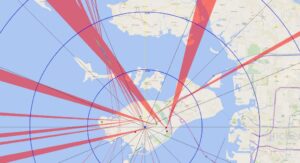
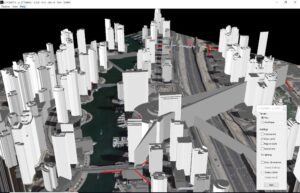
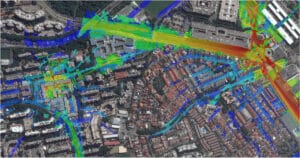
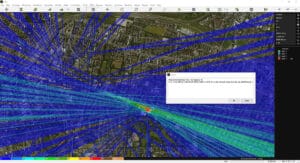


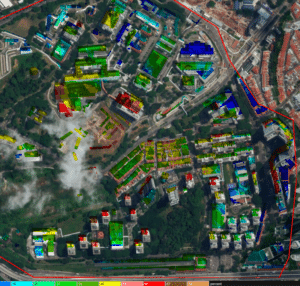
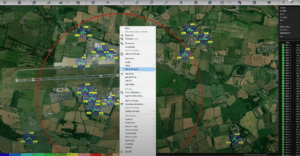
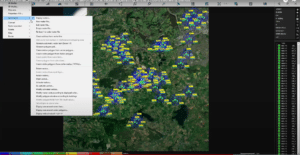


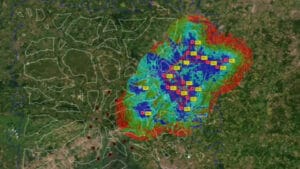
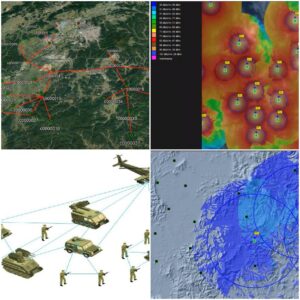
We recommend the following hardware specification to run HTZ communications / HTZ Warfare:
Processor: x64 multicore (Intel™ I7 or better CPU) with 4 cores minimum
Memory: min. 16 GB or more
Graphics adapter: memory of 2 GB, OpenGL compatible, Full HD Display (1920 x 1080 minimum). UHD recommended
Graphic card: 2 GB, OpenGL compatible, Full HD (1920*1080 minimum)
AI: Nvidia card recommended (GPU)
Hard disk: SSD 1 TB or more. Storage: 2 TB
Internet access for map download and access to the online library
Microsoft Office™ x64
X64 Operating systems: Windows™ 10, Windows™ 11, Windows Server™ 2012, Windows Server™ 2016, Windows Server™ 2019, Windows Server™ 2022, Windows Server™ 2025.
NB. FIPS encryption compatible.
Memory: 16 GB and more
Processor: x64 multicore (Intel® I7 or better CPU) with 4 cores minimum
Hard disk: SSD 1 TB or more. Storage: 2 TB
x64 multicore (Intel™ I7 or better CPU) with 4 cores minimum
Internet access (for map download and access to the online library)
Graphics card: 2 GB, OpenGL compatible, Full HD (1920*1080 minimum). UHD recommended.
AI: Nvidia card recommended (GPU)
x64 OS Operating systems: Windows™ 10, Windows™ 11, Windows Server™ 2012, Windows Server™ 2016, Windows Server™ 2019, Windows Server™ 2022. Windows Server™ 2025.
NB. FIPS encryption compatible.
HTZ allows users to integrate their custom propagation models into the software. For more information, please contact support@atdi.com
Our software supports the complete network lifecycle including network design, planning and optimization. It allows engineers to model coverage from outdoor into indoor spaces and indoor to indoor, providing seamless coverage for end users.
ATDI offers Universities access to HTZ Communications licenses at a competitive price. Licenses can be hired for the academic year according to the numbers required. For the price of the packs available, please contact your local office.
U-Pack 5: for 5 simultaneous users
U-Pack 10: for 10 simultaneous users
U-Pack 25: for 25 simultaneous users
The educational packs include access to a dedicated server license, which allows a maximum of simultaneous users depending on the pack purchased.
HTZ Warfare licenses are available for military research agencies and training schools for students wishing to complete their thesis, providing this thesis offers contributes to developing a subject or theory for the telecom market.
As part of the upgrade from ICST to HTZ, we now use soft key activation codes. These are installed in the software directory for standalone licenses or on the server. The license options for these are listed below:
Standalone licence/s: This licence is attached to one standalone PC or laptop. Once the licence has been activated, it remains attached to the computer where the activation is initiated. No other application or software tool is required for set-up. A standalone licence allows each user to operate up to three instances of the software (CALs) at any one time.
Server licence: A Licence Server Management Tool needs installing and the server licence must be activated on that Server. The Client computer will then connect to the server to activate their local license. Any computer connected to the LAN can use HTZ, with the number of concurrent users or sessions equal to the number of licences available. A server licence allows each user to activate one instance of the software (CAL) per licence at any one time.
Our software supports a plethora of propagation models. For the latest released version, contact our support helpdesk.
Deygout 1994
Deygout 1991
Deygout 1966
Bullington
Delta-BullingtonDiffraction
UTD3D Multipath: Ray-tracing and Lambertian reflections2D reflections: minima/maxima, reflection point, 2-ray model
Absorption (dB/km, mix Diffraction/absorption…)
ITU-R P.617-3
ITU-R P.617-5
ITU-R P.676-12
ITU-R F.1820-0
ITU-R P.840-8
ITU-R P.530-18
ITU-R P.837-7
ITU-R P.838-3
Crane
ITU-R P.525-4
ITU-R P.526-15
ITU-R P.526-11
ITU-R P.1546-6
ITU-R P.1812-6
ITU-R P.452-17
ITU-R P.452-14
ITU-R P.368-9
ITU-R P.1147-4
ITU-R P.528-3
ITU-R P.528-5
ITU-R P.2001-4
ITM-NTIA (Longley-Rice)
Durkin3GPP-LTE (urban/rural)
SUI
Okumura-Hata
Hata Seamcat modified
Hata Cost 231
Cost 231 open
OHD TSB-88
Hata modified by ACMA
Wojnar
Egli
ITU-R P.529-3
ITU-R P.370-7
Cardif (HTZ warfare only)
ITU-R P.533-13
African Broadcast
FCC 98
3GPP-LTE
Johnson-Gerhardt IF77
ITU-R M.1225-0
ITU-R P.2109-1
ITU-R P.2040-2
TSB-88
NBS 101
ITU-R P.618-13
ITM 122
Walfisch-Ikegami
Vigants
...
ATDI offers a choice of software hosting options. Our users adopt a desktop solution (standalone) or through LAN-server license or VPN (server) or via the end-user Virtual Machine (VM) or cloud-based server options (cloud).
To ensure our users make the most from their software, we offer an annual maintenance-service contract which offers access to:
Technical Support helpdesk – providing remote technical support and assistance. Our team of experts will diagnose, clarify and correct any issues that occur using our software from Monday-Friday 09.00-17.00 CET.
Software updates – providing timely software updates ensuring our software solutions keep up-to-date with technology developments and are free of errors.
Access to our map data library – providing users with royalty-free cartography ready for direct import into our software solutions.
We offer two licensing options: perpetual license for indefinite use and hire licenses.
Users can download the software onto as many machines as required. This software is activated in two ways:
Standalone license: This version is fixed to a standalone PC or laptop. Once the license has been activated, it remains attached to the machine where the activation is initiated. No other software application is required for set up. A standalone license allows each user to operate three instances of the software (CALs) at any one time.
Server license: This option requires a License Server Management Tool to be installed and the license must be activated on that Server. The Client computer then connects to the server to activate their license. Any computer connected to the LAN can use the software, with the number of concurrent users or sessions equal to the number of licenses available. A server license allows each user to activate one instance of the software (CAL) per license at any one time.



